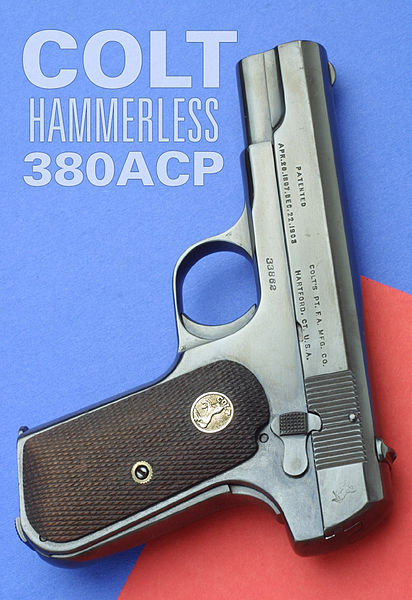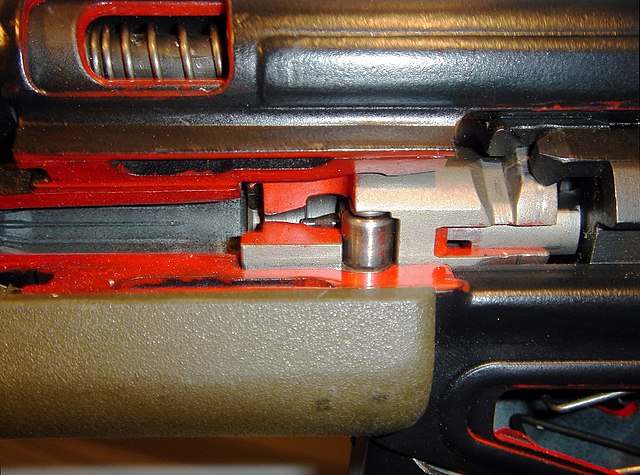A mine shell or high-explosive, high-capacity (HEHC) in British military nomenclature, is a military explosive shell type characterized by thin shell walls and a correspondingly high quantity of explosives, much higher than the traditional high explosive shell type per caliber, meaning that mine shells trade fragmentation effect for a higher pressure wave effect when comparing to traditional high explosive shells.
Mine-construction during the American Civil War. This mine was dug under the enemy like traditional tunnel warfare. (see Battle of the Crater)
French "fougasse" mine-construction from pre-modern times. This weapon-name was later given by the French to a specific mine shell design called obus fougasse (fougasse shell).
Imperial German 25 cm (9.8 in) "mine-mortar" (German: Minenwerfer) during World War I.
German 30x90mmRB mm rounds as used by the MK 108 cannon. The sectioned round is a mine shell (Minengeschoss).
Blowback is a system of operation for self-loading firearms that obtains energy from the motion of the cartridge case as it is pushed to the rear by expanding gas created by the ignition of the propellant charge.
The .380 ACP Colt Model 1903 Pocket Hammerless uses simple blowback. The mass of the slide is enough to delay opening of the chamber until pressure has dropped.
Cutaway model of the chamber with gas relief flutes (left) and roller-delayed action of the G3 battle rifle
Exploded view of primary components for bearing delay bolt carrier group
Operation of the Schwarzlose machine gun.








